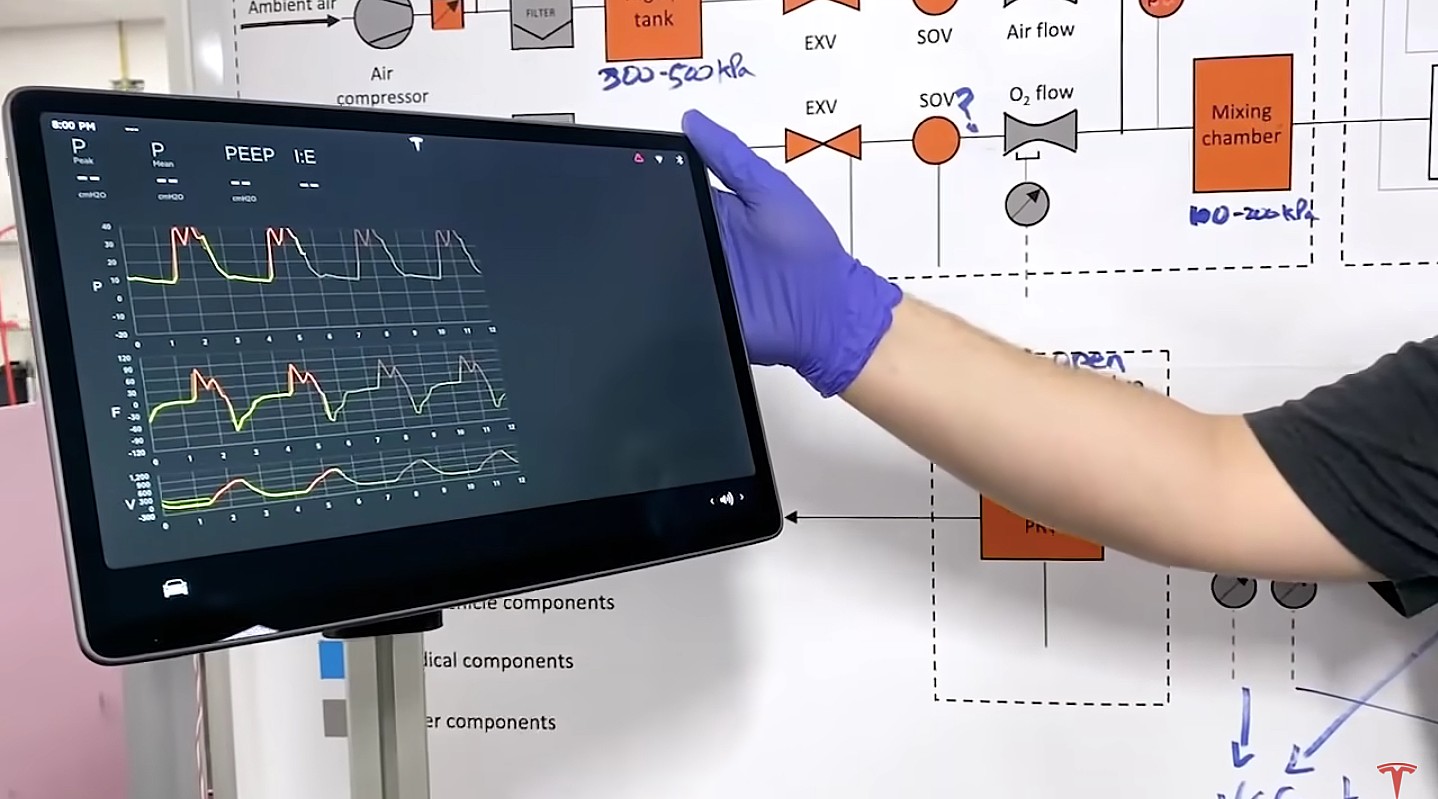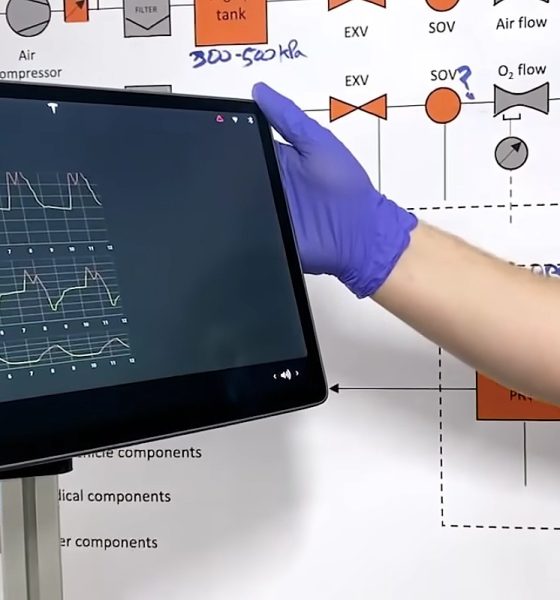

News
Tesla’s ventilator donations are being used to provoke Elon Musk into another controversy
During a global pandemic, an optimist would hope that people would work together to help those in need out of the common good. A pessimist would suggest that such circumstances would bring out the worst in people instead. Recent developments in the media coverage of Elon Musk and Tesla’s ventilator donations suggest that the pessimist is right. At times like these, there are entities who choose to provoke people that are willing to help–all for the sake of controversy.
Elon Musk is no stranger to controversy, both self-inflicted or otherwise. Over the past years, Musk has butted heads with several entities, from regulators like the SEC to journalists who tend to cover Tesla with pervading negative slant. Some of these bouts have resulted in a lot of pain for Musk and even Tesla shareholders. An example of this is Musk’s spat with British caver Vern Unsworth, whose defamation case against the CEO over comments following the Thailand cave rescue triggered some TSLA stock swings and extensive coverage from multiple premier news outlets.
Musk has a strong tendency to correct misleading reports. Take CNN’s recent coverage of Tesla’s ventilator donations, for example. The news outlet published a report alleging that no ventilators have reached CA hospitals despite Musk’s commitment to do so. Musk then took it upon himself to correct the report, showing messages between Tesla and the medical professionals from the state communicating about the donated machines and their use.
This, of course, triggered even more staff from CNN to double down, alleging that the non-invasive ventilators donated by Tesla weren’t ventilators at all, despite medical professionals stating that the machines are invaluable for non-critical coronavirus cases. The BiBAPs and CPAPs donated by Tesla could even be retrofitted using a simple modification to work for critical cases. Tesla has also started delivering actual invasive ventilators to hospitals, on top of the company’s efforts to develop its own ventilator using Model 3 parts.
Anyone with an iota of sense would see that Tesla and Musk are pretty much doing what they can to address the needs of medical professionals as much as possible. Are the BiBAPs and CPAP’s donated by Musk useful in the battle against the coronavirus? Medical professionals, government officials, and CEOs of actual ventilator makers would agree. Can the machines be modified to work for more severe cases? The doctors at Mt. Sinai Hospital in New York say it’s actually pretty simple to do so. With this in mind, it seems like a no-brainer to conclude that the machines Tesla donated are indeed helping in the battle against the ongoing pandemic.
This point was lost entirely in critical articles that have been published about Musk and Tesla’s donations from outlets such as CNN. One who is unfamiliar with the events that led up to Musk’s recent Twitter interactions would likely think that the Tesla CEO brazenly lied when he committed to donating free ventilators, instead giving away cheap machines that are useless against the C-19 virus. Critics would even refuse to acknowledge non-invasive machines as actual ventilators, despite authorities such as John Hopkins listing them as such.
A key thesis against Musk alleges that he lied about ventilator donations to get some free PR and goodwill. This does not hold water, as Tesla and Musk already receive an insane amount of media coverage, and the company is scrutinized consistently by the media and critics from Wall Street. Thus, the idea of Musk wanting more media coverage to stroke his ego does not seem to make sense, considering that he and his companies actually get a little bit too much coverage. With this in mind, it appears that CNN’s recent reports about Tesla’s ventilator donations, as well as the succeeding tweets from the media outlet’s staff doubling down on their narrative, are designed to do one thing. They are posted to provoke Musk, until such a time when he actually responds with something concretely controversial.
Something similar has happened before. Mention Musk’s name with the Thai cave rescue and many will likely remember the CEO’s incendiary comments against British caver Vern Unsworth. A popular narrative for the event also alleges that Musk stuck his nose into the rescue without prompting so he can get free PR, and that he “attacked” the caver just because he wanted to. The fact that Musk was invited to help, that his team was in close communication with rescuers, and that the caver initiated the verbal spat, are largely forgotten. These experiences, as painful as they may be, must now stand as a huge lesson to Elon Musk.
Musk is no stranger to controversies with the media, and having gone through significant pains over the years because of them, he must handle the ongoing attempts to provoke him with extreme caution. At this point, Musk’s critics (and apparently, CNN staff) are practically salivating at the prospect of the CEO firing off a tweet that can be interpreted as a direct act of aggression against the news outlet or any of its staff. So far, Musk’s responses have been sarcastic, and that’s fine and true to his personality. But the Tesla CEO must be aware that he is not playing a fair game here. Every point of syntax and semantics can and will be exploited to fit a narrative, even if it means twisting the context of a statement. With this in mind, Musk’s best strategy for now is to proceed with a ton of caution, or complete silence.

Elon Musk
Starlink achieves major milestones in 2025 progress report
Starlink wrapped up 2025 with impressive growth, adding more than 4.6 million new active customers and expanding service to 35 additional countries, territories, and markets.

Starlink wrapped up 2025 with impressive growth, adding more than 4.6 million new active customers and expanding service to 35 additional countries, territories, and markets. The company also completed deployment of its first-generation Direct to Cell constellation, launching over 650 satellites in just 18 months to enable cellular connectivity.
SpaceX highlighted Starlink’s impressive 2025 progress in an extensive report.
Key achievements from Starlink’s 2025 Progress
Starlink connected over 4.6 million new customers with high-speed internet while bringing service to 35 more regions worldwide in 2025. Starlink is now connecting 9.2 million people worldwide. The service achieved this just weeks after hitting its 8 million customer milestone.
Starlink is now available in 155 markets, including areas that are unreachable by traditional ISPs. As per SpaceX, Starlink has also provided over 21 million airline passengers and 20 million cruise passengers with reliable high-speed internet connectivity during their travels.
Starlink Direct to Cell
Starlink’s Direct to Cell constellation, more than 650 satellites strong, has already connected over 12 million people at least once, marking a breakthrough in global mobile coverage.
Starlink Direct to Cell is currently rolled out to 22 countries and 6 continents, with over 6 million monthly customers. Starlink Direct to Cell also has 27 MNO partners to date.
“This year, SpaceX completed deployment of the first generation of the Starlink Direct to Cell constellation, with more than 650 satellites launched to low-Earth orbit in just 18 months. Starlink Direct to Cell has connected more than 12 million people, and counting, at least once, providing life-saving connectivity when people need it most,” SpaceX wrote.
News
Giga Nevada celebrates production of 6 millionth drive unit
To celebrate the milestone, the Giga Nevada team gathered for a celebratory group photo.

Tesla’s Giga Nevada has reached an impressive milestone, producing its 6 millionth drive unit as 2925 came to a close.
To celebrate the milestone, the Giga Nevada team gathered for a celebratory group photo.
6 million drive units
The achievement was shared by the official Tesla Manufacturing account on social media platform X. “Congratulations to the Giga Nevada team for producing their 6 millionth Drive Unit!” Tesla wrote.
The photo showed numerous factory workers assembled on the production floor, proudly holding golden balloons that spelled out “6000000″ in front of drive unit assembly stations. Elon Musk gave credit to the Giga Nevada team, writing, “Congrats on 6M drive units!” in a post on X.
Giga Nevada’s essential role
Giga Nevada produces drive units, battery packs, and energy products. The facility has been a cornerstone of Tesla’s scaling since opening, and it was the crucial facility that ultimately enabled Tesla to ramp the Model 3 and Model Y. Even today, it serves as Tesla’s core hub for battery and drivetrain components for vehicles that are produced in the United States.
Giga Nevada is expected to support Tesla’s ambitious 2026 targets, including the launch of vehicles like the Tesla Semi and the Cybercab. Tesla will have a very busy 2026, and based on Giga Nevada’s activities so far, it appears that the facility will be equally busy as well.
News
Tesla Supercharger network delivers record 6.7 TWh in 2025
The network now exceeds 75,000 stalls globally, and it supports even non-Tesla vehicles across several key markets.

Tesla’s Supercharger Network had its biggest year ever in 2025, delivering a record 6.7 TWh of electricity to vehicles worldwide.
To celebrate its busy year, the official @TeslaCharging account shared an infographic showing the Supercharger Network’s growth from near-zero in 2012 to this year’s impressive milestone.
Record 6.7 TWh delivered in 2025
The bar chart shows steady Supercharger energy delivery increases since 2012. Based on the graphic, the Supercharger Network started small in the mid-2010s and accelerated sharply after 2019, when the Model 3 was going mainstream.
Each year from 2020 onward showed significantly more energy delivery, with 2025’s four quarters combining for the highest total yet at 6.7 TWh.
This energy powered millions of charging sessions across Tesla’s growing fleet of vehicles worldwide. The network now exceeds 75,000 stalls globally, and it supports even non-Tesla vehicles across several key markets. This makes the Supercharger Network loved not just by Tesla owners but EV drivers as a whole.
Resilience after Supercharger team changes
2025’s record energy delivery comes despite earlier 2024 layoffs on the Supercharger team, which sparked concerns about the system’s expansion pace. Max de Zegher, Tesla Director of Charging North America, also highlighted that “Outside China, Superchargers delivered more energy than all other fast chargers combined.”
Longtime Tesla owner and FSD tester Whole Mars Catalog noted the achievement as proof of continued momentum post-layoffs. At the time of the Supercharger team’s layoffs in 2024, numerous critics were claiming that Elon Musk was halting the network’s expansion altogether, and that the team only remained because the adults in the room convinced the juvenile CEO to relent.
Such a scenario, at least based on the graphic posted by the Tesla Charging team on X, seems highly implausible.







